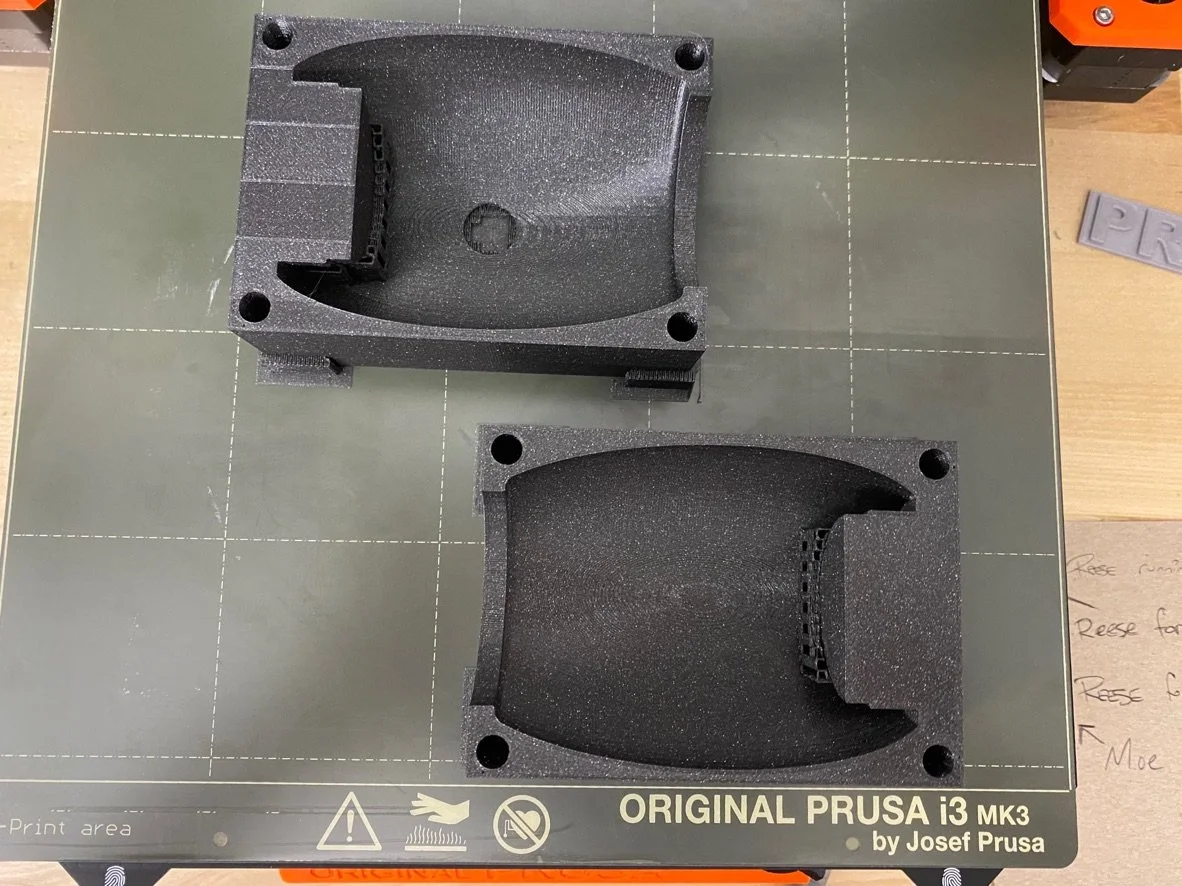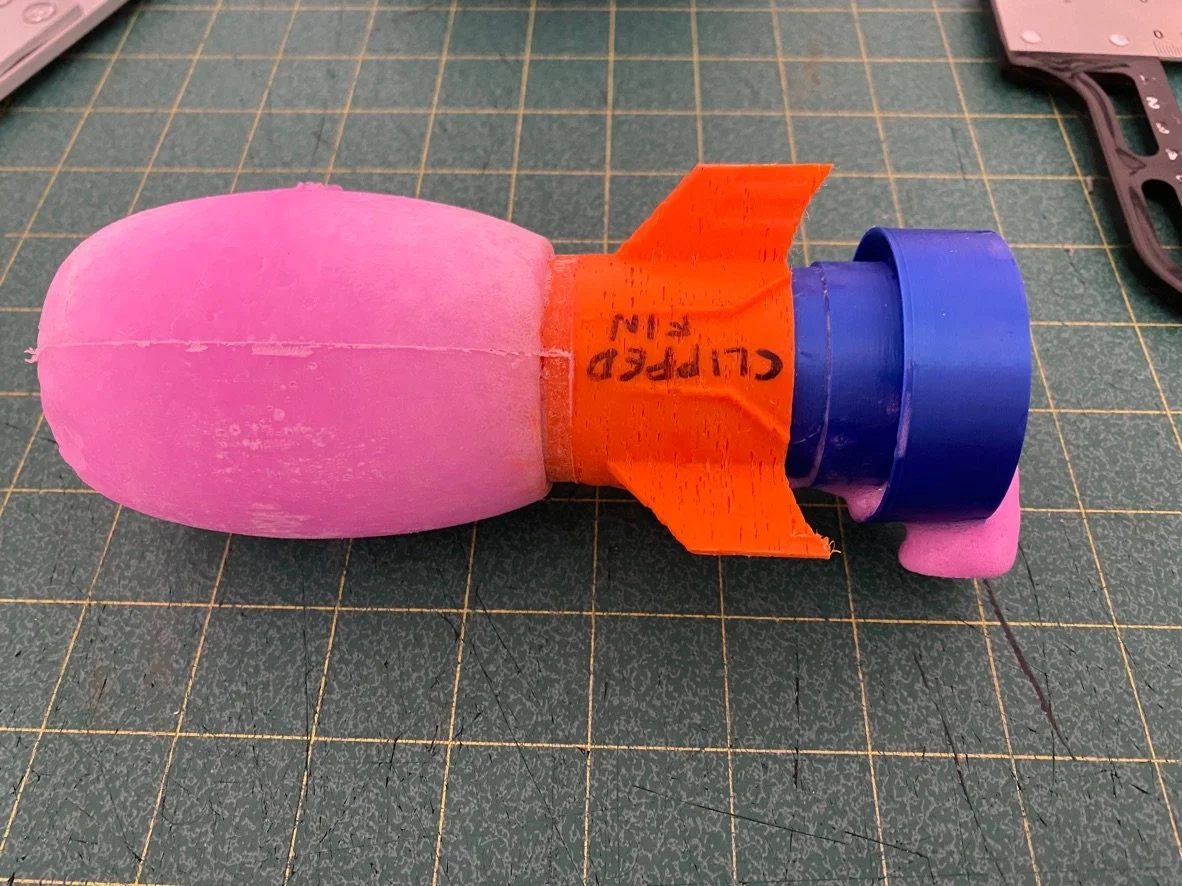Aerobie Super Sonic Fin Catch
Launch Date: Spring 2023
The goal of this project was to create a mini version of the TOTY nominated Sonic Fin Football. I was the lead engineer for this. Since this product would be at a lower price point, the project wasn’t a simple scaling down of size of the existing item—rather, we needed to determine a greatly simplified structure that still met the performance of the Sonic Fin.
Along with costing validation, I led explorations on ideal geometry and conducted material explorations with my manufacturing counterpart in China.
Through this project, I learned the importance of brainstorming early on and determining when to lean on your team. This was the first project where I led a brainstorm across all of the North America offices: through this, I took learnings from many engineers’ backgrounds in other toys and as able to provide direction on the project in a time crunch.


Geometry Validation
To ensure that the ball did not “wobble” in flight and still flew the desired distance, we needed to make sure the center of gravity of the ball was in the optimal position. We were in a time crunch and couldn’t rely on outside vendors to iterate due to the added time for shipping/receiving samples. Hence, I led prototyping in our lab in the office. I isolated the differing variables in the two parts, the foam and the tube, and then iterated through the five versions of the tube per each of the foam sculpts. The image on the right was an example of us quickly testing the center of gravity.
Prototyping wise, we designed a foam mold in SolidWorks and 3D printed (see one of the molds in first image below). We then created the foaming mixture and used the mold to overmold the foam onto the tube. The second image shows one of the samples just after it was removed from the mold.
We tested at least 12 different versions and narrowed down to three. We then presented these options to a wider team to get alignment before proceeding with development in China.
Material Exploration
A critical design constraint was that the football was “easy to catch,” meaning that it needed to be soft when catching the ball from either side. The blue part of the ball was made of polyurethane foam so making sure that end of the ball was soft to catch simply meant adding enough padding of foam in the front. The tube, however, is made of a more rigid plastic. We sampled a variety of materials and associated durometers and then narrowed down to two versions. We then tested these versions with multiple people both in and out of the office to align on which material felt the most comfortable while still achieving the flight performance.

Images courtesy of Spin Master.




